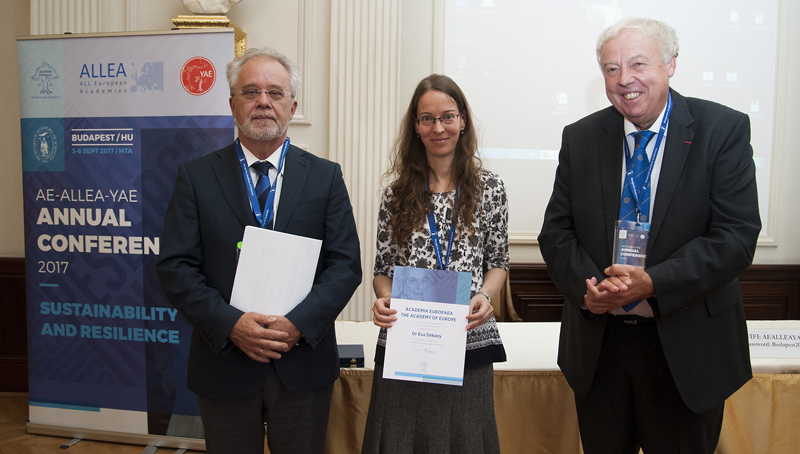Éva Dékány#
AFFILIATION: Research Institute for Linguistics of the Hungarian Academy of SciencesLINK TO WEBPAGE: http://www.nytud.hu/depts/tlp/dekany/index.html

PERSONAL WEBPAGE: https://sites.google.com/site/dekanylinguistics/home

FIELD OF SCHOLARSHIP: Linguistics
BIOGRAPHICAL NOTE:
Éva Dékány was born on March 18, 1983 in Kecskemét, Hungary. She graduated from Eötvös University (Budapest) as an M.A. in English Language and Linguistics in 2006 and as an M.A. in Theoretical Linguistics (with distinction) in 2007. She pursued a doctoral degree at the Center for the Advanced Study of Theoretical Linguistics at the University of Tromsø between 2007 and 2011, defending her PhD thesis in 2012. Since 2012, she has been working at the Research Institute for Linguistics of the Hungarian Academy of Sciences (RIL HAS). Between 2013 September and 2017 August, she held two successive postdoctoral grants from HAS. In 2016 she received the József Herman Young Researcher’s Prize from RIL HAS and the Prima Junior Award from the Prima Primissima Foundation. As of 2017 September, she is the holder of a Premium postdoctoral grant from the Academy.
DETAILS OF RESEARCH:
Éva Dékány’s work has had two main strands: the noun phrase (NP) and (non-finite) clausal subordination. International research shows that the NP has a finer structure than previously thought, but the new results after the late 90's were not applied to Hungarian. She integrated this research into the analysis of the Hungarian NP and set up a new, refined model thereof, which is new both in its details and justification. She was the first to describe and analyze Hungarian classifiers. She provided the first detailed analysis of the possessive -é suffix, and (in co-authored work) the first analysis of Hungarian possessors that can only bear Dative case She gave the first model of Old Hungarian non-finite embedded clauses and in co-authored work provided the first formal analysis of how Hungarian relative pronouns grammaticalized. She is one of the first linguists to apply formal grammatical models to Khanty and Udmurt in general and embedded clauses in particular. She also collaborates on the ‘Comprehensive Grammar Resources: Hungarian’ project at RIL HAS that is preparing the most detailed grammatical description of Hungarian to date.
THREE KEY PUBLICATION REFERENCES:
Dékány, Éva. to appear. The Hungarian nominal functional sequence. Studies in Natural Language and Linguistic Theory series. Dordrecht: Springer.
Dékány, Éva. accepted. The position of case markers relative to possessive agreement: variation within Hungarian. Natural Language and Linguistic Theory.
Dékány, Éva. 2015. The syntax of anaphoric possessives in Hungarian. Natural Language and Linguistic Theory 33(4): 1121-1168.




